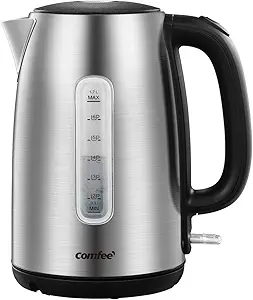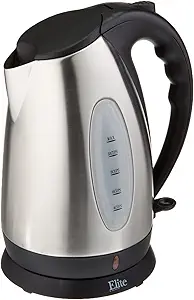The Rise of Electric Cattle: Revolutionizing Livestock Management
In the world of modern agriculture, technology is constantly being integrated to improve efficiency, sustainability, and animal welfare. One innovation gaining traction is the concept of “electric cattle” — a term that refers to the use of electric-powered tools and devices designed to assist in the care, management, and even tracking of livestock.
While “electric cattle” might conjure images of robotic cows or electrified herding devices, the term mostly applies to systems that help farmers manage their cattle with the aid of electricity in various forms.
What Are Electric Cattle?
Electric cattle aren’t a new breed of cow or a drastic change in the biology of livestock. Instead, it refers to tools such as electric fences, electric collars, and automated feeding systems that enhance cattle management. These systems rely on electricity to perform tasks like keeping livestock within designated areas, monitoring their behavior, and providing them with food and water automatically.
1. Electric Fences
Electric fences have long been a staple in managing cattle. These fences deliver a mild, non-lethal electric shock to cattle when they attempt to cross boundaries. The shock isn’t harmful but serves as a deterrent, ensuring that cattle remain within a specific area. These fences are a great way to keep cows from wandering into dangerous areas like highways or neighboring properties. With the development of portable and solar-powered electric fences, farmers can also use them in remote or shifting grazing areas.
2. Electric Collars
Electric collars are another innovation that has seen increased use in livestock management. These collars are designed to deliver a mild shock or sound vibration to guide cattle. They are especially useful in training livestock to move in a particular direction or follow specific commands. They can be an alternative to more traditional methods of herding, where farmers might use dogs or horseback riders. Some systems even come with GPS tracking, allowing farmers to monitor the location of their cattle in real-time.
3. Automated Feeding and Watering Systems
Electric-powered automated systems can regulate when and how cattle receive food and water. These systems are particularly beneficial in large-scale farming operations where manually feeding hundreds of animals is a challenge. With electric feeding systems, food is dispensed at regular intervals, and water is distributed as needed. This ensures the animals always have access to fresh supplies, which can lead to healthier livestock and improved growth rates.
Why Electric Cattle Management Matters
The integration of electricity into cattle management has several advantages. The most obvious is the efficiency it brings to farming. Farmers can reduce the time spent managing cattle manually and use automation to ensure consistency. Electric systems can be integrated into smart farming practices, where data is collected and analyzed to optimize animal care and breeding.
Electric cattle management systems can also improve animal welfare. For example, automatic watering and feeding systems ensure that cows are getting the nutrients they need without the risk of human error. Electric fences provide a humane way to keep animals from wandering into unsafe zones.
Moreover, these innovations promote sustainability by allowing farmers to manage their resources more efficiently. For example, solar-powered electric fences and feeding systems reduce reliance on fossil fuels, and automated systems help reduce food waste.
Potential Challenges and Concerns
While the benefits are clear, there are some potential concerns that farmers need to address when using electric cattle systems. For one, some livestock may become desensitized to electric shocks over time, which could reduce the effectiveness of these tools. There is also the issue of ensuring that the equipment remains safe for the animals. If a system fails or becomes improperly calibrated, it could potentially harm the livestock or lead to unnecessary distress.
The Future of Electric Cattle
As technology continues to advance, the use of electric systems in cattle management is likely to become even more widespread. Innovations such as AI-powered cattle tracking and robotic herding devices could further revolutionize how livestock is cared for in the coming decades. Farmers are already experimenting with drones, autonomous vehicles, and AI-powered systems to help with herding and monitoring.
In conclusion, while the concept of electric cattle may sound futuristic, these tools are already making a significant impact on farms around the world. Whether it’s through electric fences that keep cattle safe, automated systems that ensure proper feeding, or wearable devices that track behavior, the future of cattle management looks brighter than ever — all thanks to electricity.
Let me know if you’d like to dive deeper into any of these areas!

Proctor Silex 32oz Adjustable Temperature Hot Pot Electric Kettle.
The Proctor Silex 32oz Adjustable Temperature Hot Pot Electric Kettle offers versatile functionality for boiling water, making tea, cooking noodles, or preparing soup. With its adjustable temperature control, it ensures precision heating, while the 32oz capacity and compact white design make it perfect for small kitchens or quick meals.

COMFEE’ Stainless Steel Electric Kettle.
The COMFEE’ Stainless Steel Electric Kettle features a 1.7-liter capacity and 1500W power for fast boiling. Equipped with LED light, auto shut-off, and boil-dry protection, it ensures safety and convenience. Its sleek stainless steel design adds a modern touch, making it ideal for tea, coffee, or quick hot water needs.

Elite Platinum EKT-7050 1.7 Liter Kettle.
The Elite Platinum EKT-7050 is a 1.7-liter cordless electric kettle made from BPA-free stainless steel. It offers fast boiling with its powerful design and includes features like an automatic shut-off for safety. Its sleek, cordless structure makes it easy to pour and store, providing both functionality and style.

Cosori Electric Kettle.
The Cosori Electric Kettle features a 1.7L capacity with a stainless steel inner lid, spout, and filter, ensuring no plastic contact with water. With 1500W power for quick boiling, it’s perfect for tea, coffee, or heating water. It also includes an automatic shut-off for added safety and convenience.

Dual Voltage Travel Kettle.
The Dual Voltage Travel Kettle is a compact 350ML electric kettle perfect for global use with its 110-240V compatibility. It features an LCD display, four temperature settings, and color-changing LED lights for easy monitoring. Ideal for travelers, it ensures quick, precise boiling for tea, coffee, or hot beverages.
